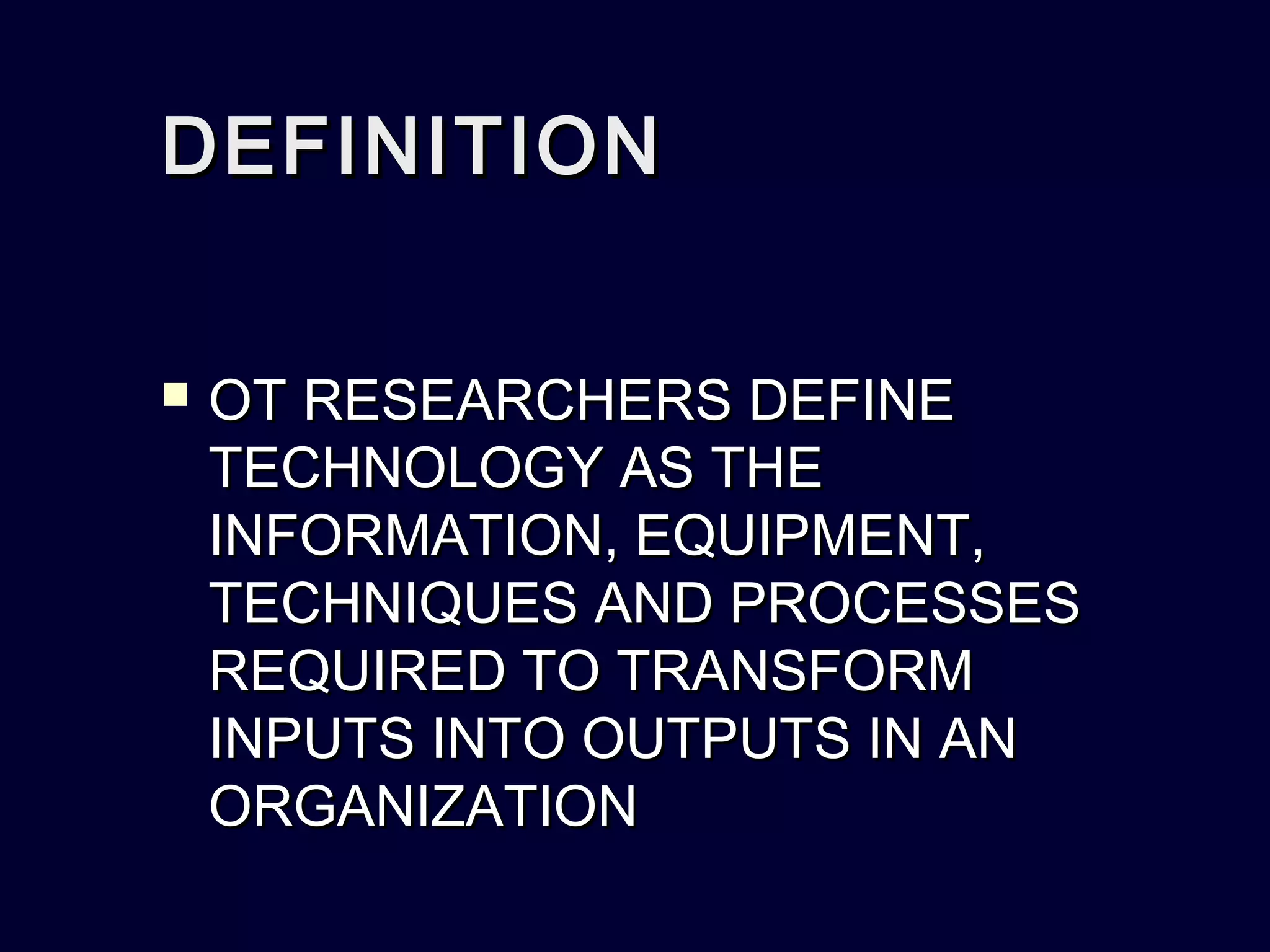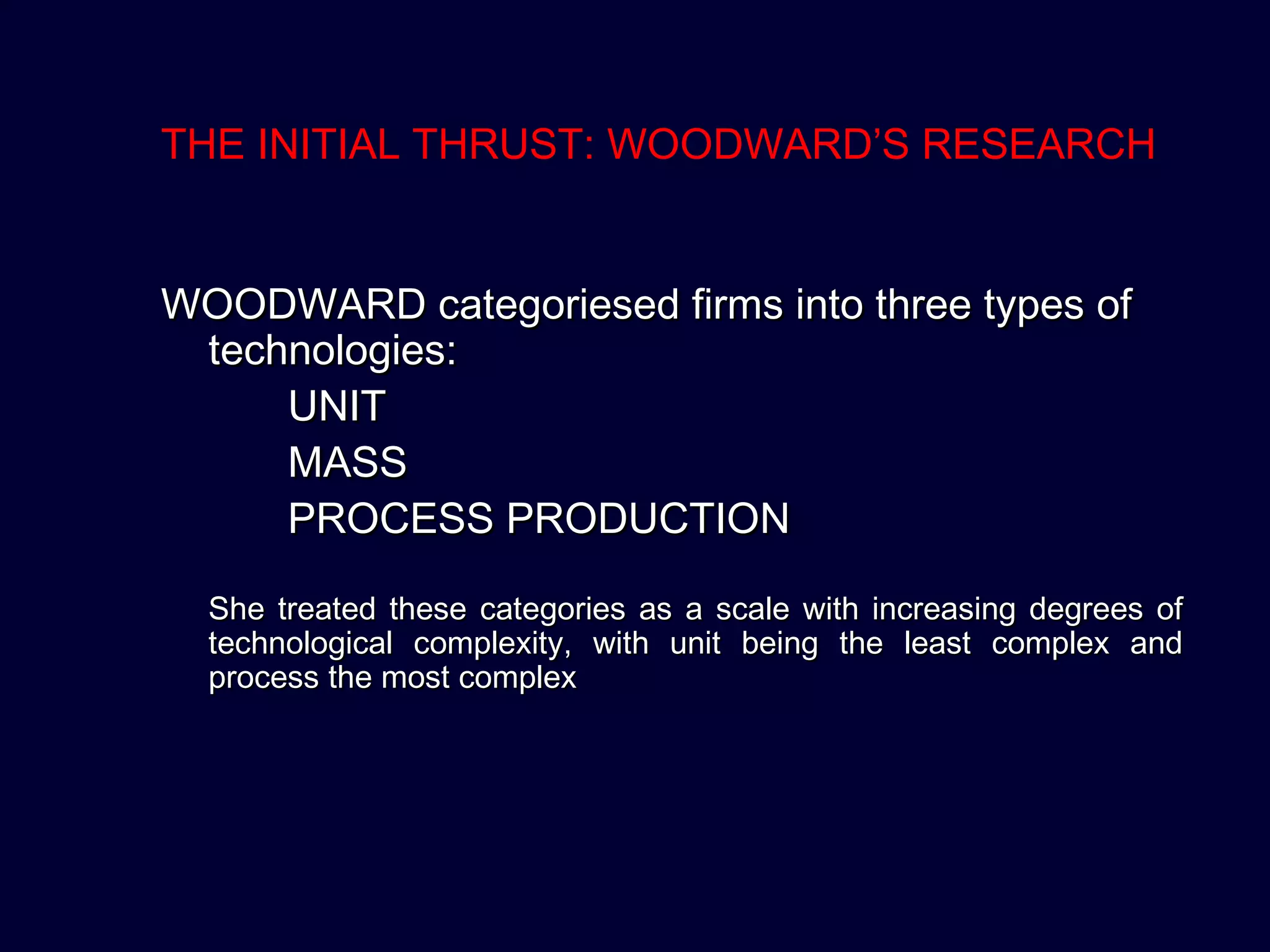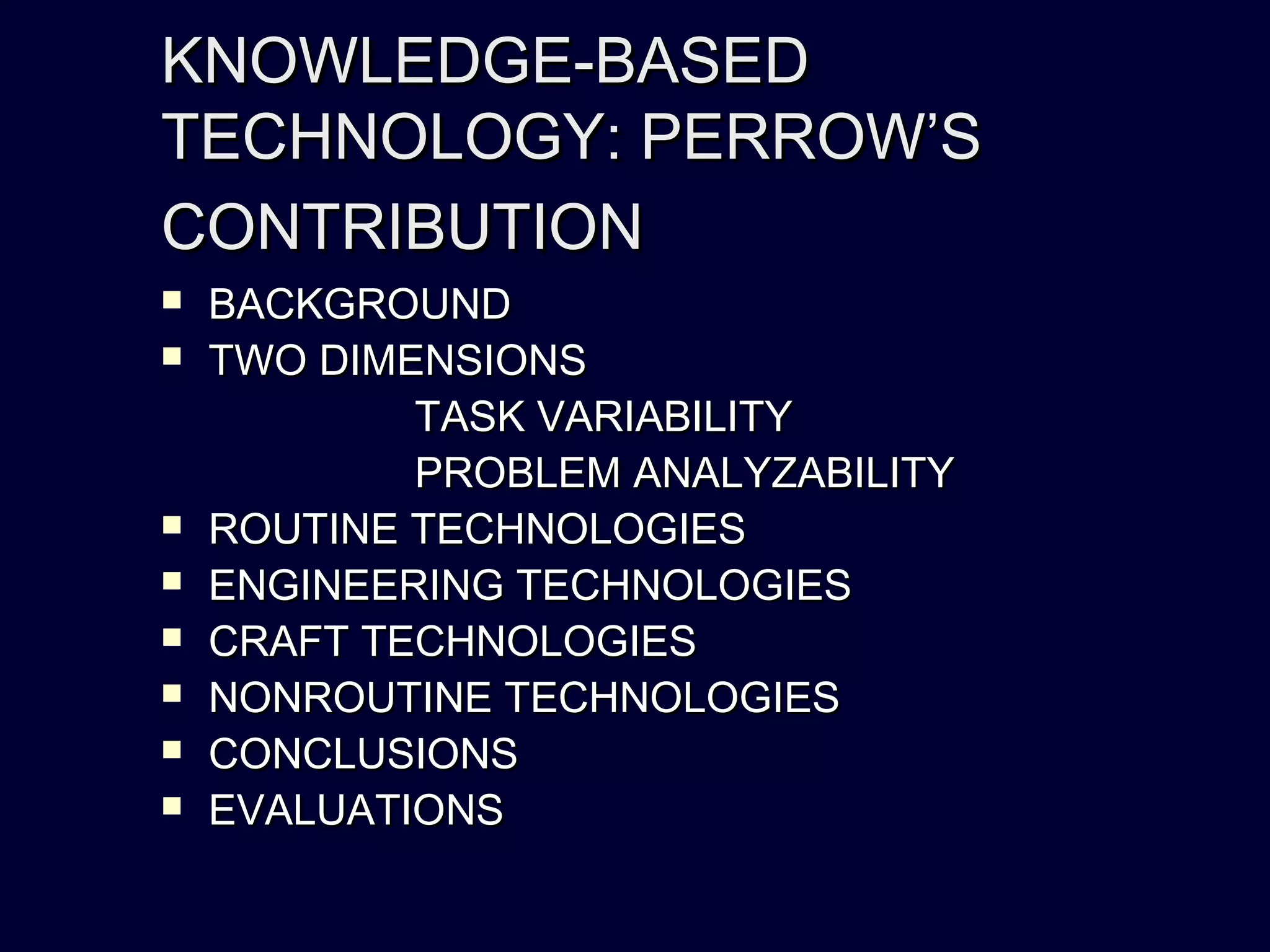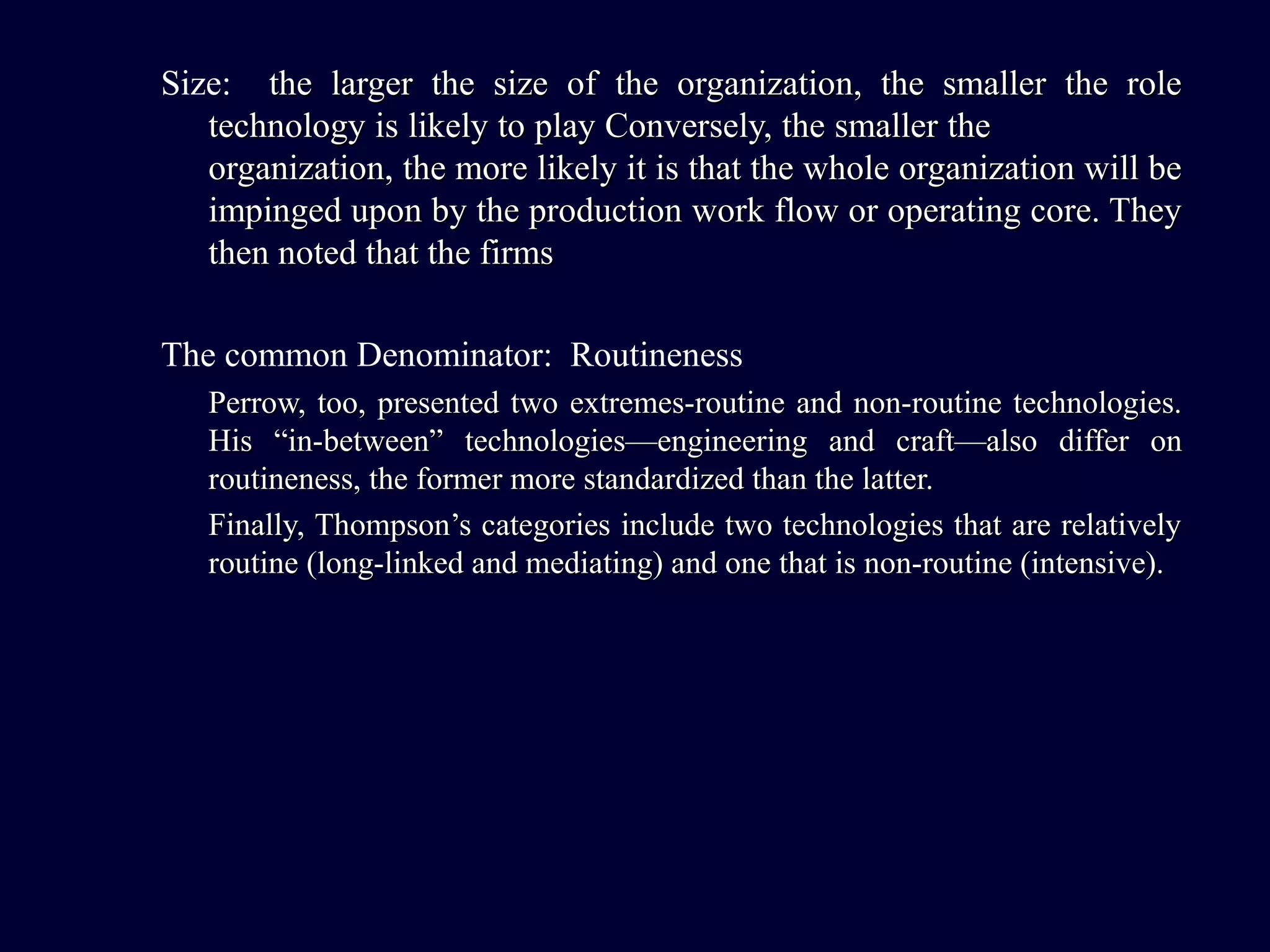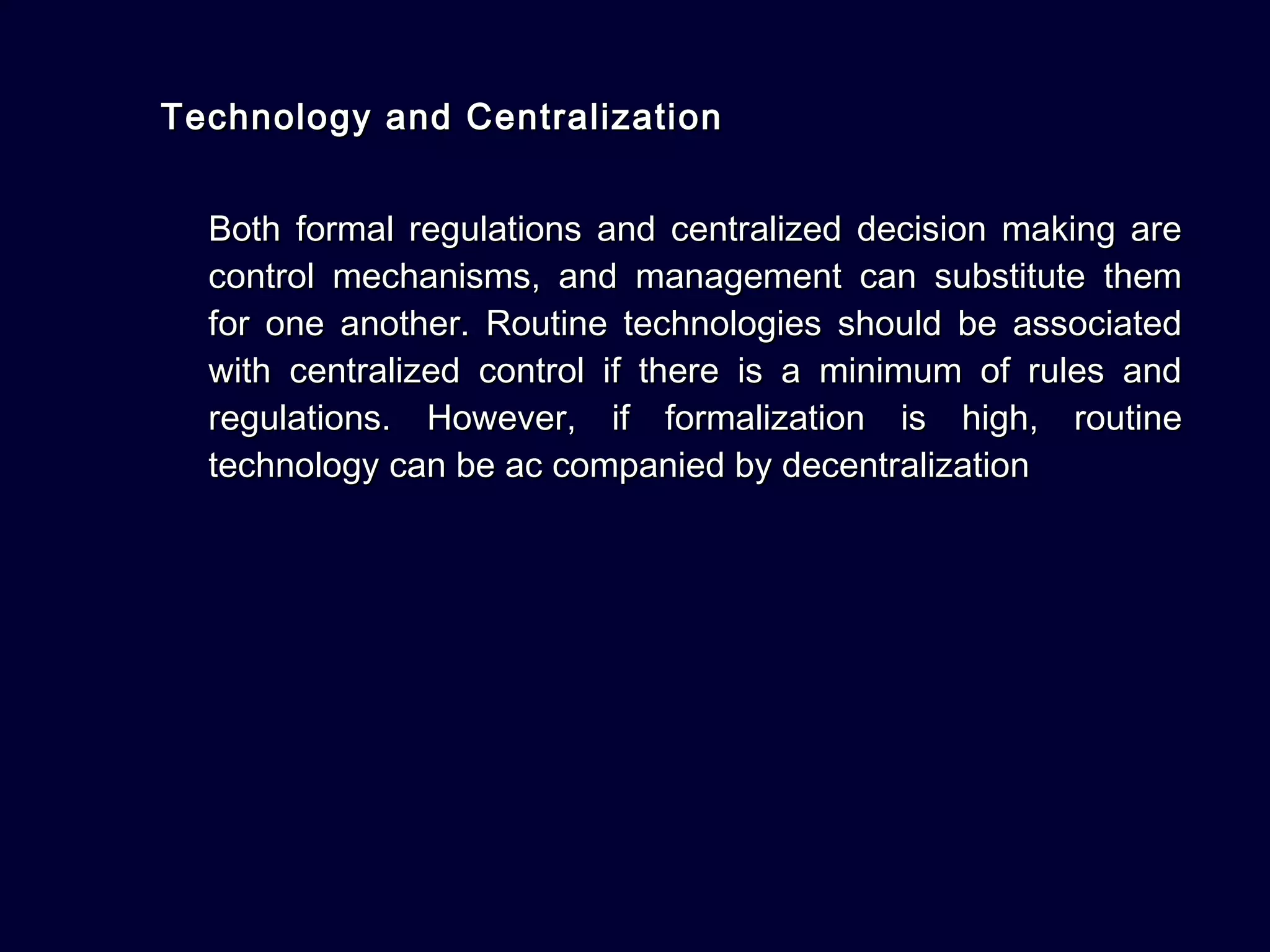The document discusses different perspectives on the relationship between technology and organizational structure. It describes Woodward's categorization of technologies as unit, mass, or process production and her finding that effectiveness results from an appropriate technology-structure fit. It also covers Perrow's two dimensions of task variability and problem analyzability and their four technology types. Finally, it discusses Thompson's categories of long-linked, mediating, and intensive technologies and how routineness is a common factor across perspectives. The document concludes that the influence of technology on structure is supported by job-level research and most applicable to small organizations.


